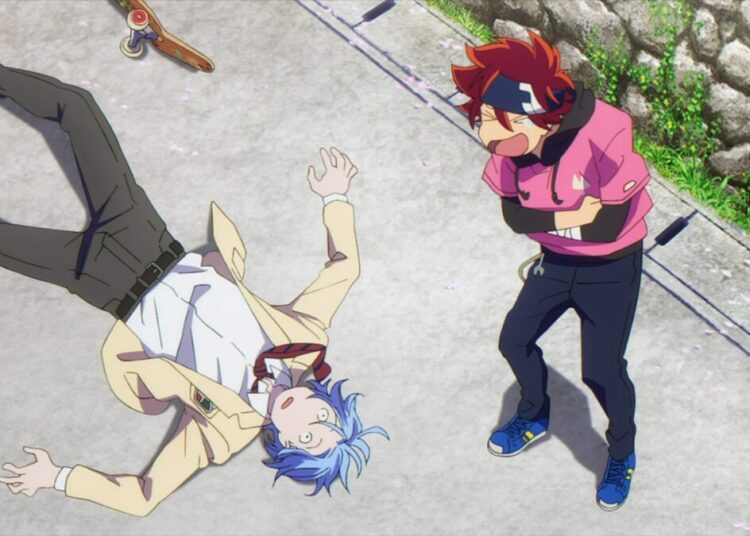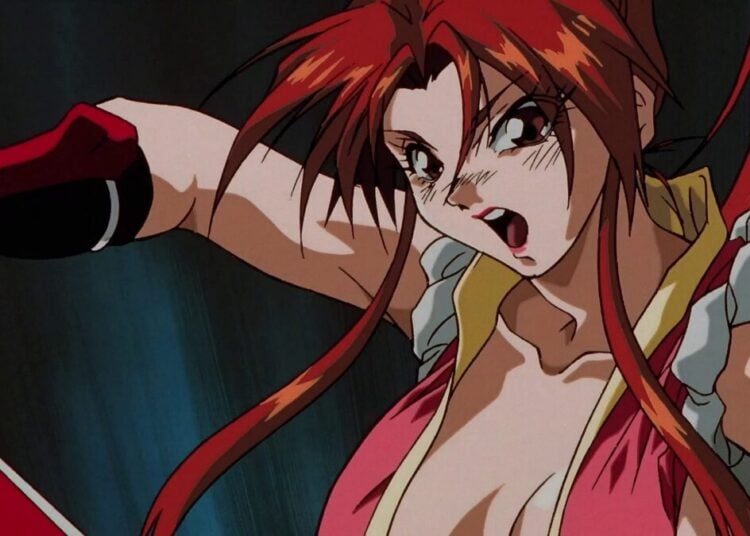Cipher the Video is a weird time capsule of ‘80s Americana
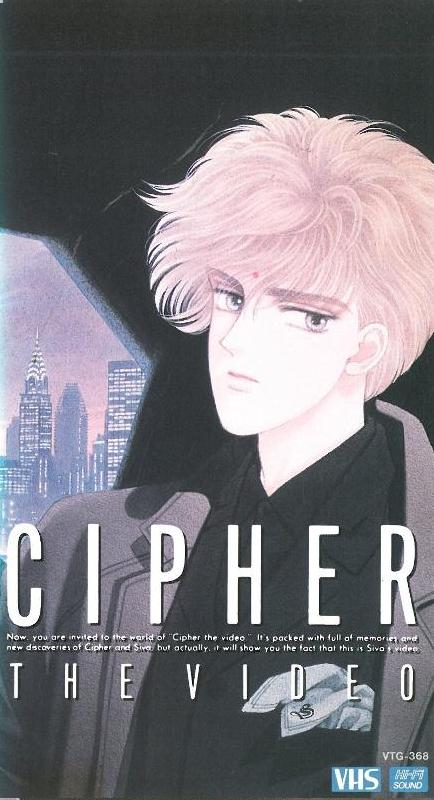
The 1980s were a fascinating time for both Japan and the United States. While many works then and since have sought to capture the essence of the era, one of the most fascinating is also one of the strangest. Enter Cipher the Video, a peculiar OVA that manages to be a time capsule of ‘80s Americana. For all its bizarreness and the similarly weird circumstances behind its creation, however, you’ll still find something worth talking about.
Released in 1989 and with a runtime of over 40 minutes (26 of which being the actual OVA), it was directed by Tsuneo Tominaga and animated by Magic Bus (of Legend of the Galactic Heroes and Yokai Watch fame), under the Victor Musical Industries, Inc. brand (now JVCKenwood Victor Entertainment). It’s also based on a 12-volume shoujo manga of the same name by Minako Narita, which ran from July 1985 to December 1990. These details alone, however, don’t really explain the surreal nature of the anime.
Start Spreading the News
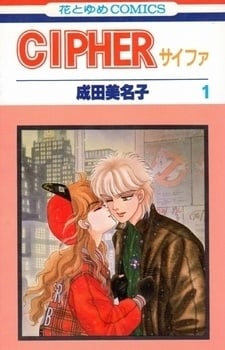
Cipher is a romance manga focusing on a high-school student named Anise Murphy, who finds herself caught between a pair of twins: Siva/Jake Rang, and the titular Cipher/Roy Rang (both played by Jay Kabira). Former child actors-turned-celebrities, the brothers constantly switch identities and have placed a bet on who Anise will fall for after she spends two weeks at their apartment. Hijinks, heartache, love and all kinds of emotions ensue, amidst the backdrop of 1980s New York City.
If you expect the OVA to explain or introduce any of that, however, it’d be a mistake. Even with a passing familiarity with the source material, one would find that there’s barely any plot at all, or any significant effort to ease you in. The bulk, instead, is a sensory blend of what’s essentially AMVs and slice of life vignettes spliced together, complete with a fictional commercial, and a documentary snippet following an in-universe movie Siva’s starring in. The opening sequence alone is a seemingly random montage of NYC to the tune of Phil Collins’ “Against the Odds,” which sets the tone of what to expect. Apart from some quick bio text introducing the twins early on, as well as seemingly out-of-context animated scenes from the manga, it’s all too easy to be confused as to whether you’re watching an extended commercial for an anime series that doesn’t exist. That it seems to just end abruptly after a brief talk about breakfast is just one of many bizarre observations to be had.
Edited snippet of an AMV-esque musical number from the OVA, featuring “Footloose” in the background. This alone showcases just how random the anime could get. Circa 2020. (Source: YouTube)
Just as attention-grabbing would be how the dubbing’s done entirely in English by a mostly Japanese cast. From an era when Engrish was practically the norm in anime, this can come across as almost shocking. The voice acting tends to simultaneously be amateurish and naturalistic, with the actors clearly trying hard to affect an American accent. While this can at times come off as stilted, it’s remarkably fluent and manages to feel more like a Western production. Jay Kabira, in particular, does a rather decent performance, keeping in-character even for the “making of” feature that comprises the remaining 14 minutes. That said, the varied quality can lend to some jarring dissonance with the shoujo-inspired art style.
By now, you may be wondering: Why bother checking this seemingly obscure piece of ‘80s anime history? The answers can be found not only in the OVA itself but the circumstances behind its creation.
A Love Letter to America
Mangaka Minato Narita (who was also involved with the anime’s creation) is in some respects like a female version of Hirohiko Araki, with a reputation for being an avid fan of Western culture. In her case, it’s an affectionate love for America, which was no less evident in her work on Cipher and on full display in the OVA.
The anime’s origins, as revealed in the “making of” documentary, can be traced back to a 1986 commercial for Sumitomo Life Insurance that somehow got the license to use the manga, the revelation that the end-product is a labor of love puts things in a different light. The animators went to the trouble of not only doing their research but also going around New York itself, with added attention in locations where the manga’s characters would usually be, such as East Village.
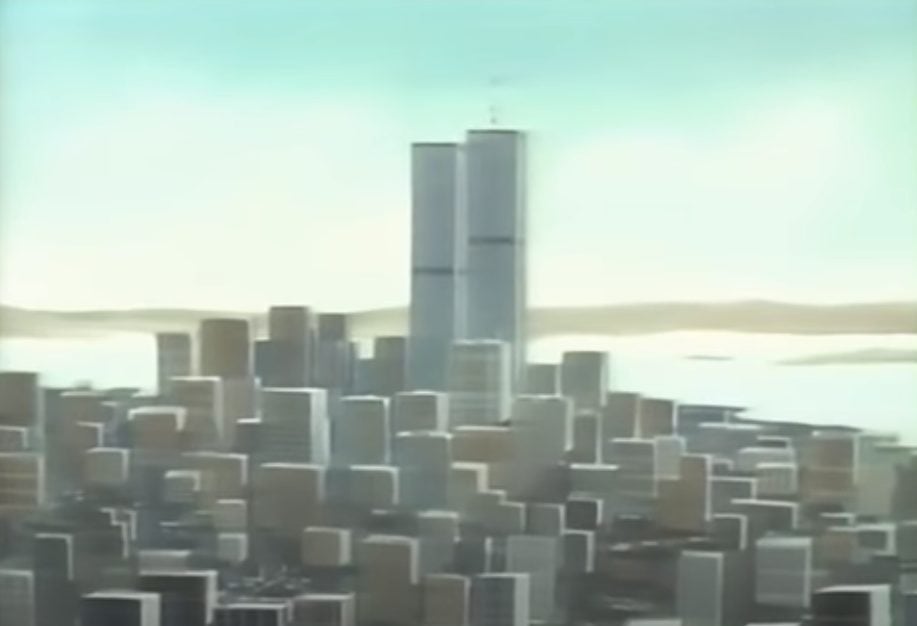
The results give considerable believably to the visuals, on top of Narita’s own substantial research. Whether it’s the fashions on pedestrians, the detail on recognizable landmarks like Washington Square and Central Park, or the accurate depiction of the old Pan Am building, you really get a good feel of what NYC was like around 1988-89. Granted, it’s slightly idealized compared to the real thing, and the significant presence of the Twin Towers (which the male leads are heavily inspired by) from every angle would lend a degree of post-9/11 awkwardness, if not melancholy. Nonetheless, the OVA really succeeds in forever preserving a rather accurate snapshot of the pre-Giuliani Big Apple.
Then, there’s the execution of all the seeming randomness, which is ultimately a celebration of ‘80s Americana. The AMV-esque segments, especially the number done to the tune of Deniece Williams’ “Let’s Hear it for the Boy,” are so heavily inspired by music videos from the decade that it wouldn’t be out of place in an actual old MTV clip. Even the in-universe TV ad and documentary, which segue into Kenny Loggins’ “Footloose,” do a surprising job in further giving the OVA that flair of authenticity, all with clear affectionate love for the culture. If not for the art style and occasional weird bits, you’d be forgiven for thinking it’s a Japanese adaptation of American work. For its time, it’s pretty impressive.
https://www.youtube.com/watch?v=5C5TquMe9jM
The OVA has become the source of myriad, affectionate memes in recent years. Circa 2019. (Source: YouTube)
All in all, Cipher the Video is a surprisingly entertaining, if surreal, experience. As a lengthy advertisement of the manga it’s based on, it’s no wonder Narita continued working on the setting even after the last main volume was finished. It’s still a shame, however, that the OVA never led to a proper anime adaptation, and was left to slip away from view. With Laserdisc and VHS copies only ever seeing the light of day in Japan, you’re not likely to find them on store shelves any time soon.
Still, it’s hasn’t been forgotten. In more recent years, it’s seen renewed interest online, thanks in part to the likes of The Land of Obscusion and Youtuber kenny lauderdale. Whether it’s for the bizarre nature, the ‘80s nostalgia or the memes, you’re bound to find something memorable here.


